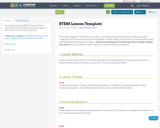
This template supports STEM teachers that build science practice and STEM inquiry skills in alignment with state and national science standards.
- Subject:
- Applied Science
- Environmental Science
- Material Type:
- Lesson Plan
- Date Added:
- 11/26/2019

This template supports STEM teachers that build science practice and STEM inquiry skills in alignment with state and national science standards.

In this text, students will be reading and thinking critically about work written by and about women over about a 1500 year period. From non-fiction to drama to poetry and short fiction, students will study many different kinds of literature from a variety of voices and perspectives.

This is Experiment #2 in the Analytical Chemistry Lab sequence at MSU Denver. In this experiment, students will use spectroscopy to determine the concentration of iron in an unknown samples. Analytical techniques are covered including standard addition and how to accurately create standards.
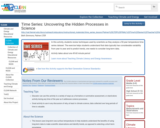
In this activity, students review techniques used by scientists as they analyze a 50-year temperature time series dataset. The exercise helps students understand that data typically has considerable variability from year to year and to predict trends, one needs to consider long-term data.
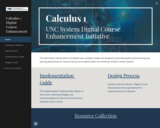
The information shared within this website was carefully curated and designed to promote quality online teaching and learning experiences for Calculus faculty and students within the University of North Carolina System.
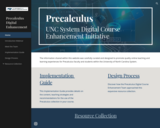
The information shared within this website was carefully curated and designed to promote quality online teaching and learning experiences for Precalculus faculty and students within the University of North Carolina System.
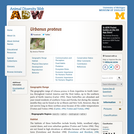
Urbanus proteus: Information
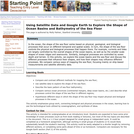
This activity is for an introductory oceanography course. It is designed to allow students to use various tools (satellite images, Google Earth) to explore the shape of the sea floor and ocean basins in order to gain a better understanding of both the processes that form ocean basins, as well as how the shape of ocean basins influences physical and biological processes.
(Note: this resource was added to OER Commons as part of a batch upload of over 2,200 records. If you notice an issue with the quality of the metadata, please let us know by using the 'report' button and we will flag it for consideration.)
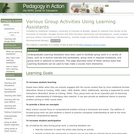
Undergraduate Learning Assistants have been used to facilitate group work in a variety of ways, such as in-lecture tutorials and worksheets, group work in required recitations, and group work in optional co-seminars. This page describes some of these various ways that Learning Assistants can be used to help make a course more interactive.

This is Experiment #4 in the Analytical Chemistry Lab sequence at MSU Denver. This experiment is divided into three parts.The standardization of sodium hydroxide and hydrochloric acidDetermining the alkalinity of a control and unknown sampleDetermining the total cation content of a control and unknown sample Students will master titrations by performing them until the required accuracy and precision tolerances are met. A spreadsheet is used to calculate these values. Then students will bring in a water sample from home to determine its alkalinity and total cation content. For these two parts students will perform a potentiometric analysis and learn to use a pH meter.
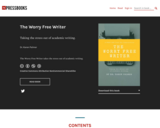
The Worry Free Writer is the product of over 20 years of experience in teaching composition. Dr. Palmer directs students through the Writing Process, while teaching them a simple Writing Formula that they can use to help take the stress out of writing for academic purposes.
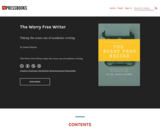
Taking the stress out of academic writing.
Short Description:
The Worry Free Writer takes the stress out of academic writing.
Long Description:
The Worry Free Writer is the product of over 20 years of experience in teaching composition. Dr. Palmer directs students through the Writing Process, while teaching them a simple Writing Formula that they can use to help take the stress out of writing for academic purposes. In this text, students learn how to write an analysis, an evaluation, and an argument with step by step instructions. Additionally, the book includes mini-grammar reviews of common writing errors, an introduction to MLA and APA formatting, and a guide for publishing work to the web.
Word Count: 42016
(Note: This resource's metadata has been created automatically by reformatting and/or combining the information that the author initially provided as part of a bulk import process.)